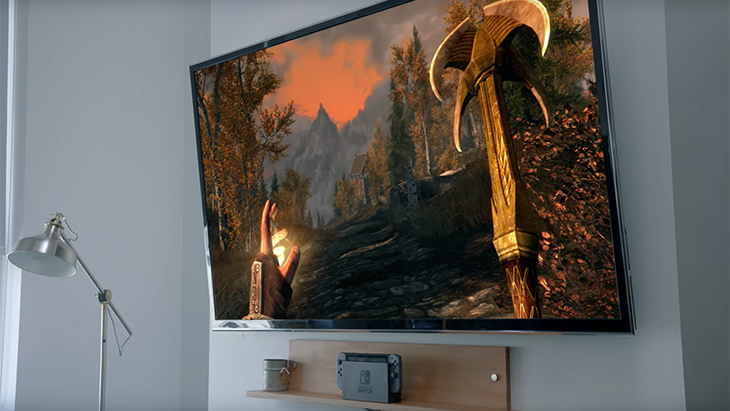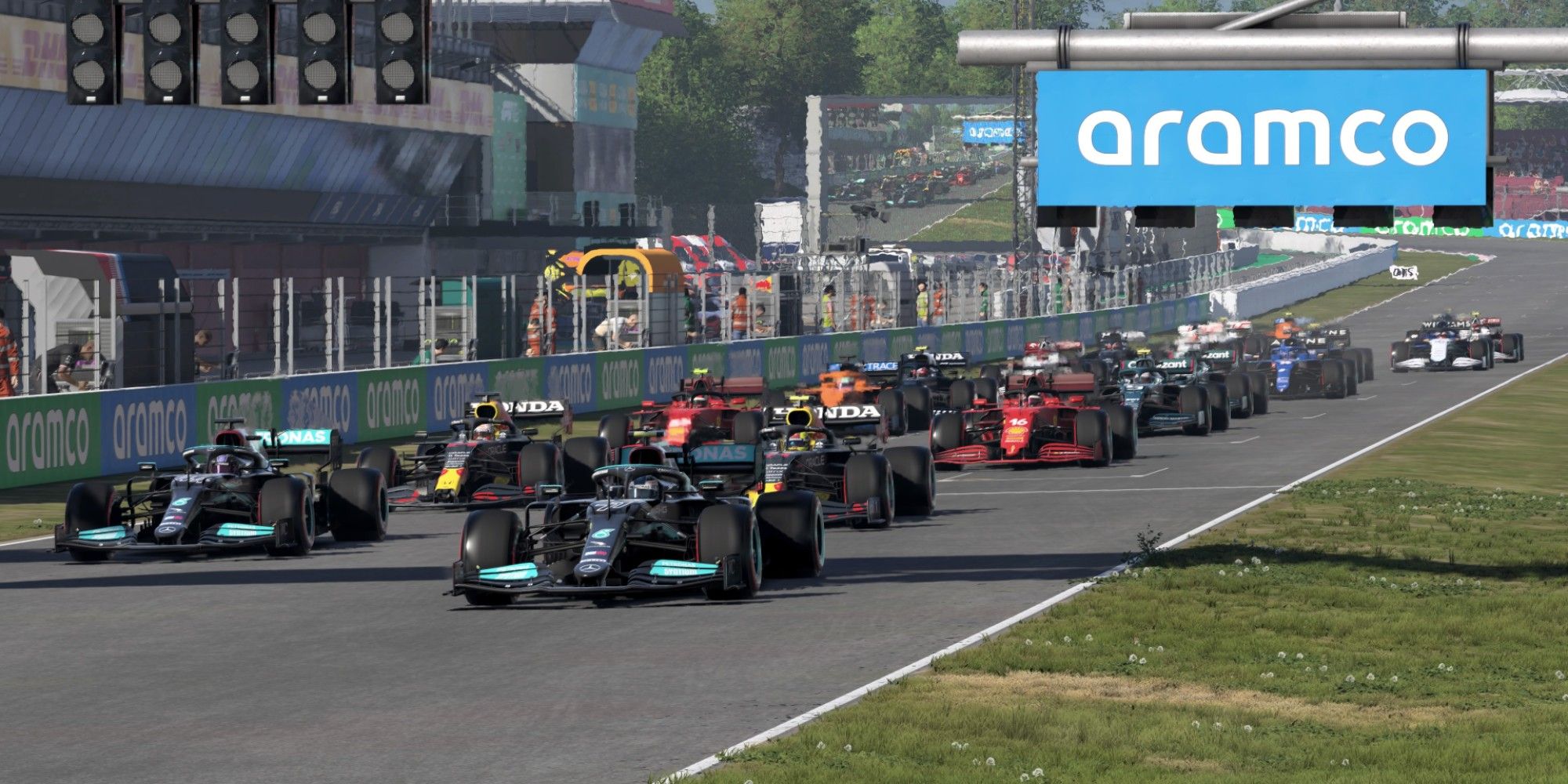

Developer Norsefell’s debut title, Tribes of Midgard is finally out after a fair bit of anticipation for the game. Set against a Norse backdrop, Tribes of Midgard is a co-op survival game with rogue-lite elements. It’s a steaming pot of ideas that aim to put co-op front and center within the survival and roguelike genre but are hampered down by a number of annoying design decisions and half-baked mechanics that don’t quite hit the mark in this regard.
Tribes of Midgard sees players control a custom character Viking, sent down from Valhalla to defend a village from the attack of Jotunns i.e. the giants from destroying the tree of life in order to prevent Ragnarok, which is the end of the world according to Norse mythology. The story isn’t exactly a focal point of the experience, but it’s quite disappointing that the developer didn’t try to include much in the name of lore – which is all the more egregious given that the Norse mythology setting is ripe with stories that are worth telling.
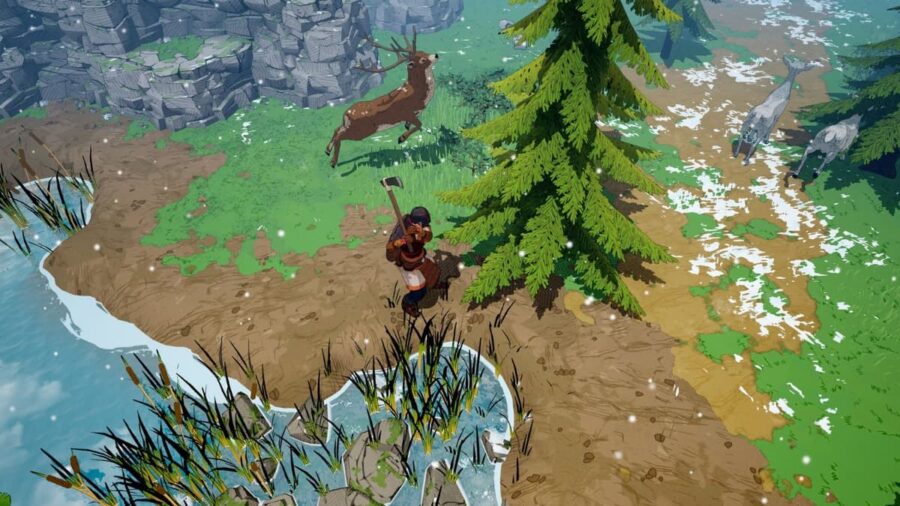
"The story isn’t exactly a focal point of the experience, but it’s quite disappointing that the developer didn’t try to include much in the name of lore"
To be fair, it’s not completely devoid of any story. As soon as you boot the game for the first time, the game explains the previously mentioned story set up in a few slides. Item descriptions do shower snippets of information about the game’s story, but that doesn’t satiate the desires or potential within the setting that could have been utilized in a far better manner.
Instead, Tribes of Midgard puts the focus on its gameplay, which sadly enough follows the same theme of great concept, less-than-stellar execution. Before jumping into the real game, players need to get through the tutorial, which fails on a very basic level. Apart from very basic crafting, exploration, and combat – the tutorial tells little to nothing about its more intricate systems such as building structures, biomes, upgrading gear, and a bunch of other things.
There are 2 different modes available for players to choose from at launch – which includes Saga, a 100-day survival mode that tasks players with completing a bunch of objectives before the timer runs out. The other is Survival, which is an endless game mode that well, tasks you with surviving for as long as possible. Both games can be played either in co-op or solo, although the majority of my time with the game was spent with the former.
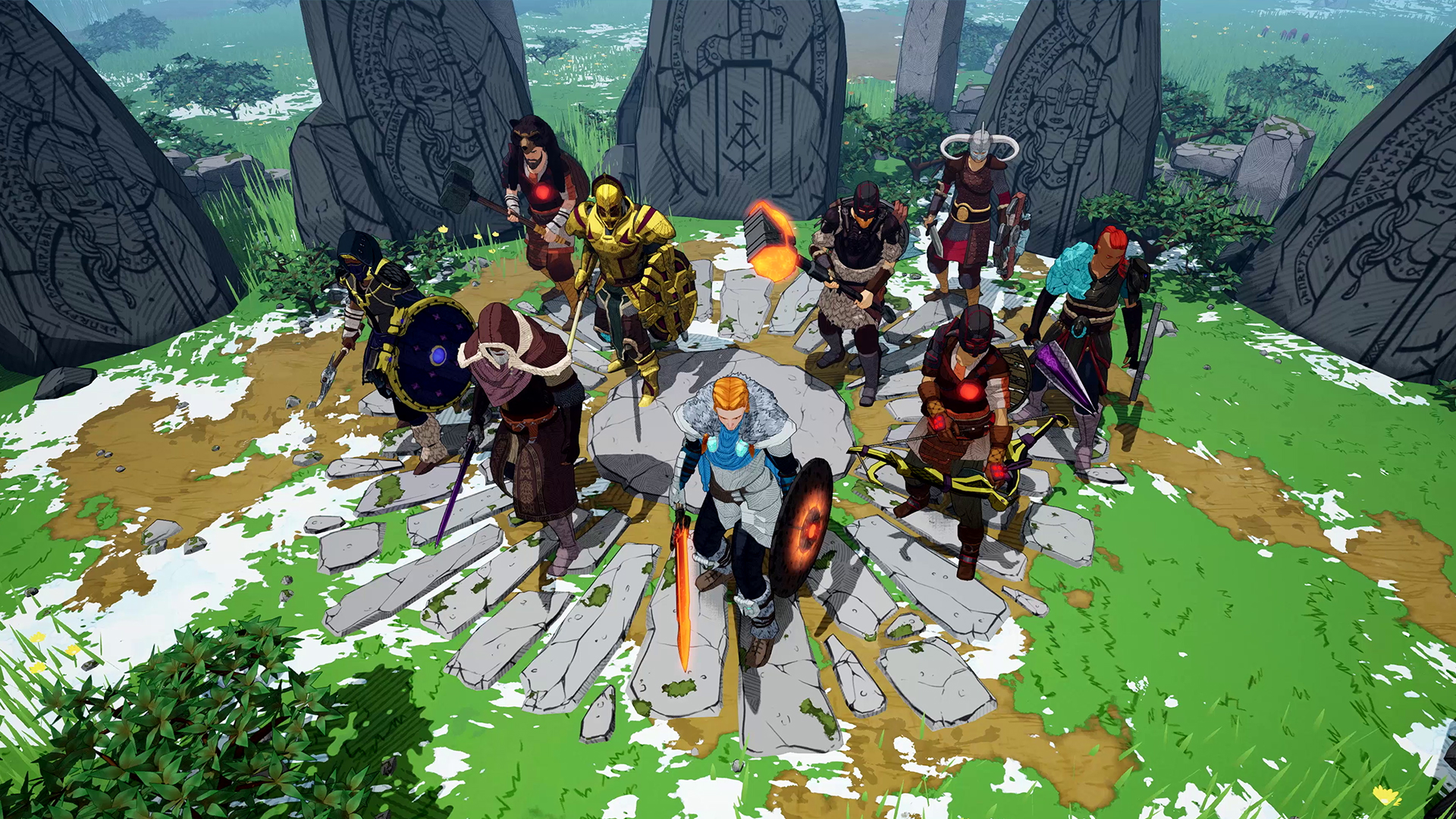
"Apart from very basic crafting, exploration, and combat – the tutorial tells little to nothing about its more intricate systems such as building structures, biomes, upgrading gear, and a bunch of other things."
Credit where credit is due, Tribes of Midgard does a great job with its co-op mechanics on a purely technical level. The matchmaking is near-instantaneous, and I encountered no lag or server issues of any kind. A point worth mentioning is that co-op is drop-in and drop-out, and the difficulty scales with the number of players. An interesting trick up Tribes of Midgard‘s sleeve is its implementation of XP within survival mode, which operates on a multiplier that changes depending on difficulty selected, size of the map, and a number of other variables.
As you drop into the Saga mode, you are tasked with collecting a few resources to help prepare yourself for the night. You will need to collect a few flint and branches to craft some basic tools, that will help you in harvesting more resources in a far efficient manner. Each resource you collect also nets you some Souls, which is a precious currency that will be required for all manner of upgrades, repairs, and even healing the Tree of Yggdrasil. After a few minutes, night falls – and soon a number of hideous beasts will attack your village and players must co-operate to fend off waves of these beasts from the village until sunrise.
The combat in Tribes of Midgard isn’t anything exceptional and promotes spamming the primary attack until a meter charges then activate the secondary attack. There are a few enemies that require some thoughtful strategy to defeat but are few and far between to shake up the core tactics in any meaningful way. There are a number of weapons that also don’t feel much different from each other in use, with the exception of the bow, of course. If you die at any point, you are robbed of your Souls and materials and have to make it back to the point of death to retrieve lost contents, which is a familiar take on player mortality lifted straight out of Dark Souls.
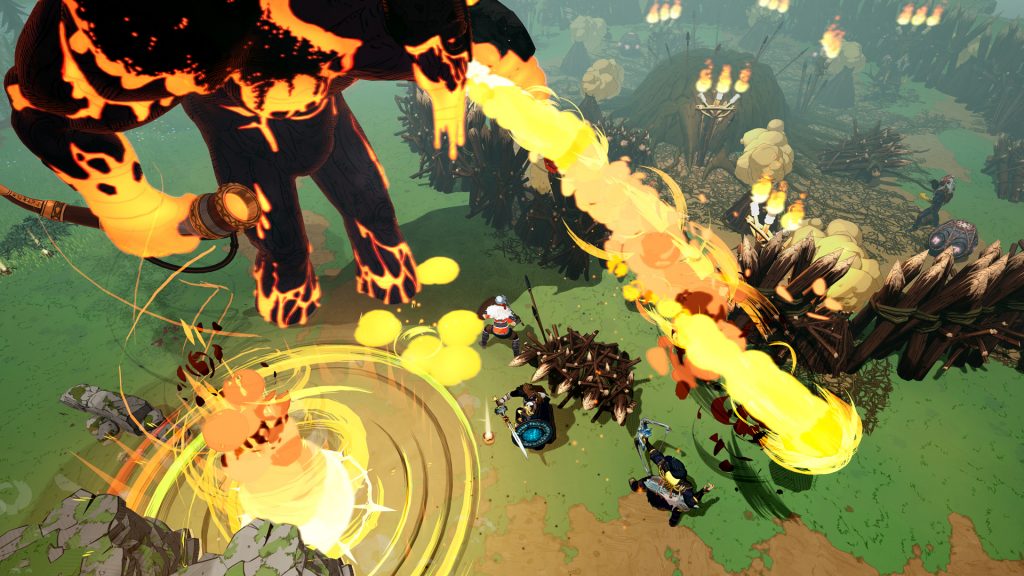
"There are a few enemies that require some thoughtful strategy to defeat but are few and far between to shake up the core tactics in any meaningful way. "
Defeating giants is also an integral part of the Tribes of Midgard experience, who will set foot in the region every handful of days with increasing difficulty, of course. In a co-op game, a player has almost no chance of defeating a giant single-handedly. Everyone must co-operate to take out the hulking behemoth, which does provide with some great feelings of satisfaction when everybody comes together to down these Jotunns. Since the map is procedurally generated, it’s entirely possible that fate deals you a rough hand – surrounding the giant with terrain that is tough to navigate or outright tough to survive due to unsuitable temperatures.
However, any satisfaction that comes with pushing against all odds in Tribes of Midgard relies upon cooperation, which can be hit or miss depending on the people you play the game with. Tribes of Midgard wants to promote cooperation but misses the mark due to conflicting mechanics and reward systems. Upgrading the village and repairing buildings do provide common benefits to all, which promotes co-operation on that front. However, the same resources – most importantly Souls are also required for things like repairing equipment which promotes and incentivizes hoarding them for personal use.
This sentiment also translates very well to gear, as higher-level gear requires exotic resources that are well, rare and incentivize hoarding them for personal use instead of sharing them with others via a common chest. Furthermore, exotic gear is absolutely required for survival in the later parts of the Saga campaign which does legitimize this behavior to an extent.
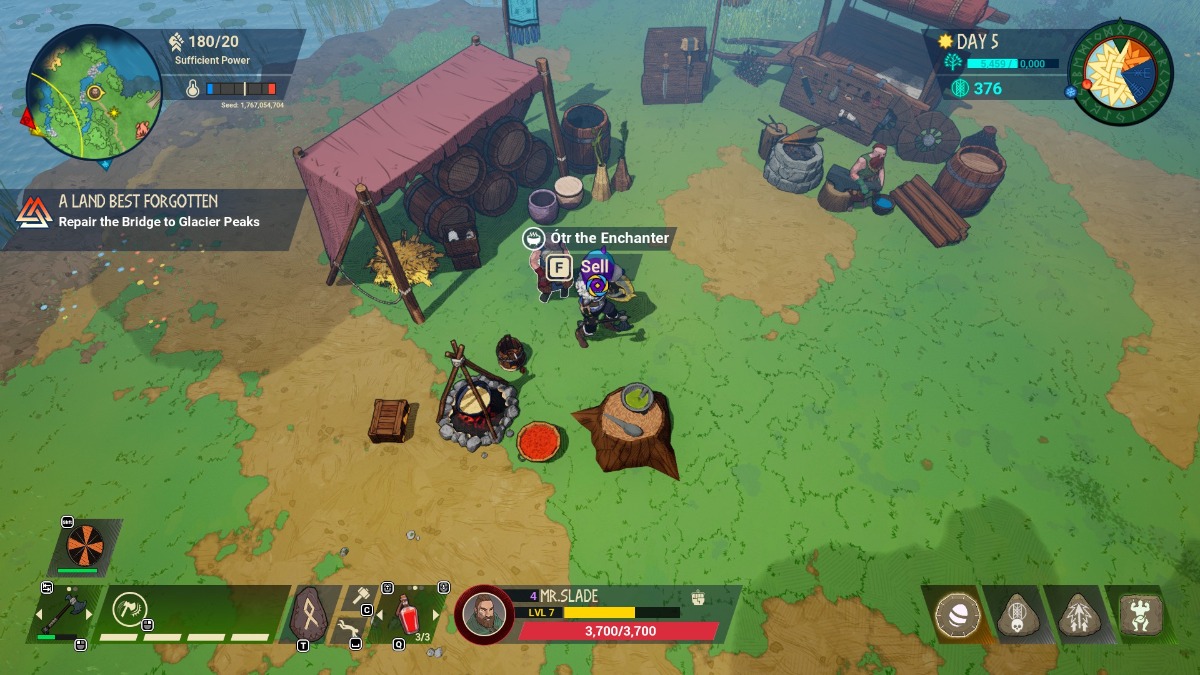
"Tribes of Midgard wants to promote cooperation but misses the mark due to conflicting mechanics and reward systems."
A Saga campaign lasts for at least about 2-3 hours, which is quite a bit longer than what most players would be willing to spend in a sitting. As you reach this period, players need to divide their tasks and manage a number of things to make it to the final lair, which becomes all the more difficult when players start to leave the server at that period of time. There are a number of classes that players can choose from during a run, and each has a skill tree that players can work towards during the course of the playthrough. Once the run is over, everything resets and you get to do it all over again.
That’s not to say there’s isn’t any permanent progression though, as Tribes of Midgard has a battle pass that unlocks a number of goodies that can make subsequent runs easier. For example, there are starter kits – which spawns you with a pre-determined loadout. There is also a number of recipes, runes, and classes to unlock which are hidden behind challenges, achievements, and the like which act as a great motivator to jump back in after completing a Saga.
"Tribes of Midgard has a battle pass that unlocks a number of goodies that can make subsequent runs easier. "
Classes, in my opinion, require some rebalance, as some provide noticeably better benefits than others. For example, the Warden allows you to nullify equipment damage – which is a much better option than marginally better stats- as given by other classes that I tried. While unlocking better classes is understandably enough, an integral part of progression – it discourages experimentation due to these disparities, which will probably grow out to be more aggravating as players spend more time with the game.
From my experience, co-op with friends is far superior to jumping in solo for the Saga mode. You do get a lot more resources which makes crafting high-level gear easier, but defeating Jotunns can be extremely boring. As you progress further, a number of threats start to make life difficult and an equally large number of exotic resources need to be collected – which calls for buddies to help out.
Tribes of Midgard‘s art style looks great and is quite clean without being bland. Spotting enemies is pretty easy, and telegraphs for attacks are also easily recognizable, giving plenty of time to roll out of harm’s way. The music feels quite repetitive but isn’t so boring to be overtly obnoxious. It’s also not very demanding in terms of system requirements, and even rigs with lower-end GPUs have a decent shot at running the game.
Tribes of Midgard is a solid foundation for an accessible survival game with roguelite elements, but needs a number of both major and minor reworks to its elements for achieving that goal. As it stands now, it’s not impossible to have fun with the game, but requires putting up with quite a few annoying decisions and mechanics that reduce the game to a pure grind. Tribes of Midgard can definitely evolve with a couple of seasonal updates but isn’t anything exceptional at this point.
This game was reviewed on the PC.
THE GOOD
Clean art style; accessible roguelite elements.
THE BAD
Promotes hoarding resources; Saga campaign way too long; tutorial doesn't explain things properly.


Final Verdict:GOOD
Tribes of Midgard is a great concept, but half-baked mechanics and design decisions prevent it from reaching the triumphs it could.A copy of this game was provided by Developer/Publisher/Distributor/PR Agency for review purposes. Click here to know more about our Reviews Policy.Original Article

